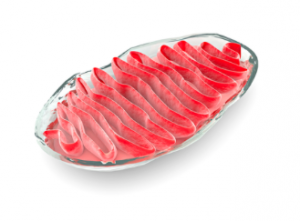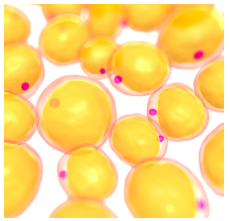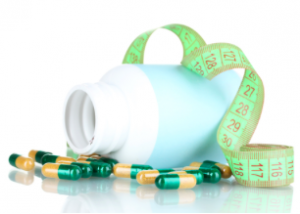Supplement Shopping: Are You Getting What You Pay For?
In an industry largely built on shams and deception, how can you be sure you’re not wasting your hard-earned cash ...

In an industry largely built on shams and deception, how can you be sure you’re not wasting your hard-earned cash ...
The importance of fibre as an essential nutrient is often overlooked and the daily requirements of obtaining enough presents a ...
Even a slight vitamin deficiency can halt muscle gain in its tracks... the scary thing is, you're probably deficient already! ...
There is no need to go into detail about how important shoulder development (specifically deltoids) is to a complete physique. ...
Protein 101 Those of you following any of my programs and / or striving to be a top bodybuilder or ...
Bodybuilders and other fitness-minded folk are for the most part considered to be a healthy bunch. Well balanced nutrition, regular ...
There are essential fatty acids, and there are essential amino acids, but there are no essential carbohydrates – our body ...
A common nutrition plan we use with clients involves rotating low carb days with higher carb days. Low carb days ...
The first thing to discuss here is what it really is to lose 10lbs of pure fat. Most people lose ...
If you’re looking for a good recipe for fat storage, high insulin and high fat in the blood is the ...
Even a slight vitamin deficiency can halt muscle gain in its tracks... the scary thing is, you're probably deficient already! ...
It is true that a person’s caloric intake has a very direct impact on their weight. Consume more than is ...
 Building and maintaining muscle mass while concurrently stripping body fat to reveal the separation and conditioning which defines the elite-level development of a bodybuilding champion is one of the hardest tasks any athlete will ever face. Based on this fact, it is not surprising how popular fat burning supplements have become. Whether used to increase thermogenesis, improve metabolic efficiency, suppress appetite, boost energy levels, liberate fat from fat cells, turn fat into fuel, or control insulin and thyroid hormone activity (or all of the above), fat burning products can, as is believed by many, be enlisted to cleave the fat to leave us looking like the shredded-beyond-perfection models featured on the covers of today’s popular fitness magazines.
Building and maintaining muscle mass while concurrently stripping body fat to reveal the separation and conditioning which defines the elite-level development of a bodybuilding champion is one of the hardest tasks any athlete will ever face. Based on this fact, it is not surprising how popular fat burning supplements have become. Whether used to increase thermogenesis, improve metabolic efficiency, suppress appetite, boost energy levels, liberate fat from fat cells, turn fat into fuel, or control insulin and thyroid hormone activity (or all of the above), fat burning products can, as is believed by many, be enlisted to cleave the fat to leave us looking like the shredded-beyond-perfection models featured on the covers of today’s popular fitness magazines.
Fat burners, in their various forms, have been around long enough to have proven their worth as effective products for physique enhancement. However, despite their efficacy, they must never be prioritized ahead of a solid nutrition plan and regular exercise regimen. They should instead be used to support gradual fat loss or to put the finishing touches on an otherwise lean physique. With all the claims of the ‘potent’ and ‘miraculous’ benefits fat burners provide, many are spending thousands of dollars in hopes of becoming super shredded without commensurate effort. Bottom line: fat burning supplements, while in many ways meritorious, are not essential fat burning tools, while hard training and optimum nutrition are. Given that, it is still worth discussing the merits of some popular fat burning compounds.
A Primer on Fat Burning Dos and Don’ts
Do:
Burn fat via nutrition and training
A well designed training and nutrition plan by far outweighs any benefits to be gained via fat burner supplementation. So prioritize diet, cardiovascular training, and resistance training, and be consistent with all three. The best fat burners remain a gym membership, a solid grasp of performance nutrition, and a persistent attitude.
Use fat burners to address hunger and boost energy levels
Certain fat burners work wonders to increase energy levels and suppress appetite. In fact, such indirect benefits could be attributable to much of these supplements’ success. Many fat burners include stimulants designed to heighten mental arousal and enhance focus and attention. Others shuttle nutrients into cells to promote endurance benefits and boost training intensity, while some suppress appetite to encourage greater adherence to a hard fat loss diet.
Do not:
Form a reliance on fat burners
Some fat burners can be habit forming. Whether through an accumulation of ‘feel good’ neurotransmitters such as serotonin and dopamine, or a stimulant jolt (some products contain upwards of 300mg of caffeine per serving) certain fat burners can become physically and psychologically addictive. Some users report taking up to four potent servings of their favorite energy/fat burner supplement per day; this can equate to over 1000mg of caffeine. Such extreme use (or even as little as 1-2 servings per day) can lead to adrenal overload and a chronic elevation of the catabolic stress hormone cortisol, a sure fire recipe for fat gain and muscle loss. Use fat burners judiciously, cycle them where appropriate, and never exceed recommended daily intakes. And, most importantly, if you must use them, do so only to supplement an established and effective training and nutrition regimen.
Use fat burners as a shortcut to fat loss success
Bodybuilders today are increasingly seeking the quick fix, a shortcut to muscle building success. This is good news for supplement companies, but not so good for bodybuilders or anyone trying to achieve a lean physique. By substituting dietary supplements for discipline, we become conditioned to taking the easy path; such deleterious thinking can only lead to mediocre results and stagnation when faced with adversity. In bodybuilding there are no shortcuts — only hard work and discipline. In most circumstances, supplements, including fat burners, are to be used as an adjunct to, not an essential part of, an established fat loss plan.
Six of the best supplemental fat burners
Fat transporters
Various lipolytic (fat burning) agents, as will soon be discussed, are used to release fat from fat cells, but this is only half the  fat burning picture. To be burned, fat must also be ushered to the mitochondria (cellular energy organelles), where it can be utilized as fuel. This is where fat transporting agents prove valuable, L-carnitine being exemplary (6, 10). Fat that is released from fat cells and secreted into the bloodstream,but not brought into the mitochondria to be burned, is recycled back into fat cells and re-stored as fat. L-carnitine, which works synergistically with CLA (conjugated linoleic acid) and omega-3 fish oil, helps shuttle fat into the mitochondria. L-carnitine also helps us to cram nutrients into our cells to increase our energy levels and to optimize training intensity, which translates to more lean muscle tissue (6); a higher training output and more muscle further supports our fat loss efforts.
fat burning picture. To be burned, fat must also be ushered to the mitochondria (cellular energy organelles), where it can be utilized as fuel. This is where fat transporting agents prove valuable, L-carnitine being exemplary (6, 10). Fat that is released from fat cells and secreted into the bloodstream,but not brought into the mitochondria to be burned, is recycled back into fat cells and re-stored as fat. L-carnitine, which works synergistically with CLA (conjugated linoleic acid) and omega-3 fish oil, helps shuttle fat into the mitochondria. L-carnitine also helps us to cram nutrients into our cells to increase our energy levels and to optimize training intensity, which translates to more lean muscle tissue (6); a higher training output and more muscle further supports our fat loss efforts.
Thermogenics
Called thermogenesis, any increase in body temperature within a healthy range can assist body fat reduction. Thermogenesis can be triggered by food, exercise, and supplementation in addition to other metabolic mechanisms such as an immune response (e.g. fever). Various stimulants are known for their thermogenic properties. Effective lipolytic agents, caffeine and yohimbine are tremendously thermogenic (10). While caffeine increases the thermogenic influence of food and stimulates the sympathetic nervous system to burn more energy at rest (4, 10), yohimbine has been suggested to also produce an antioxidant effect and improves blood flow while promoting an accumulation of free fatty acids in the blood (5).
Additionally effective thermogenic substances include capsaicin, the chemical which makes peppers hot, and protein which is a potent thermogenic. As a reference, every 1000 calories of protein consumed requires roughly 300 calories to digest and utilize.
Thyroid activators
To maintain an efficient fat burning metabolism, the health of our thyroid gland and the production of thyroid hormone must also be considered. To achieve this outcome we may use supplemental manganese (needed for thyroid hormone T4 production), bacopa monnieri (which supports the thyroid’s production of the hormone T4), and forskolin (which mimics the effect of thyroid stimulating hormone) (10).
Note: T3 (triiodothyronine) and T4 (thyroxine) are the main and most abundant thyroid hormones.
 Lipolytic Compounds
Lipolytic Compounds
Before fat is burned, it must be liberated from fat cells via a process called lipolysis. Effective lipolytic products include yohimbine and caffeine (1, 6, 10). Caffeine and yohimbine can also be combined to promote greater lipolysis than either would alone.
Appetite suppressants
Even the most devoted of dieters have cravings and hunger pangs. In fact, it is a natural human desire to seek out and consume flavorsome fare, so much so that the thoughts of many a ‘clean eater’ are often preoccupied with foods that are as welcome an addition to their shredding plan as a ham sandwich is at a Muslim barbeque. To improve adherence at times when the diet becomes difficult to maintain, many turn to appetite suppressants (10). The best appetite suppressant is largely considered to be 5-HTP (a precursor to serotonin with the ability to increase satiety). Glucomannan (a soluble, fermentable, and highly viscous dietary fiber) can also be useful for individuals who are unable / unwilling to increase their fiber intake through food sources (11).
Insulin control agents
Instrumental in the processes of carbohydrate and fat storage is insulin, an extremely anabolic hormone which maintains an integral role in fat storage (8, 12). The sufficient intake of carbohydrates provokes an insulin response which initiates glycogen storage while the excessive consumption of carbs may promote an overabundance of insulin, which can stifle fat burning and enhance fat storage (8, 9, 12). Achieving the right insulin balance can be an exceedingly tricky business. A number of supplements can be used to offset excessive insulin spiking and subsequent fat gain: chromium (reduces blood glucose, and drives down insulin and cholesterol) (2, 7, 10), magnesium (improves insulin sensitivity, to where smaller amounts of insulin are needed to lower blood glucose levels), and cinnamon extract (reduces oxidative stress and decreases blood glucose) (3, 10).
Supplements to burn
 Low single-digit body fat percentages can be achieved without specific fat burning supplements, but taking the non-supplemental route may be an inefficient and agonizing process. By increasing thermogenesis, metabolic efficiency, training intensity, thyroid and insulin functioning, and the rate at which stored fat is both liberated from fat cells and used as energy, various fat burners are likely to enhance the shredding process. However, we must keep in mind the fundamental importance of good nutrition and hard training, both of which trump any supplement known to man.
Low single-digit body fat percentages can be achieved without specific fat burning supplements, but taking the non-supplemental route may be an inefficient and agonizing process. By increasing thermogenesis, metabolic efficiency, training intensity, thyroid and insulin functioning, and the rate at which stored fat is both liberated from fat cells and used as energy, various fat burners are likely to enhance the shredding process. However, we must keep in mind the fundamental importance of good nutrition and hard training, both of which trump any supplement known to man.
References